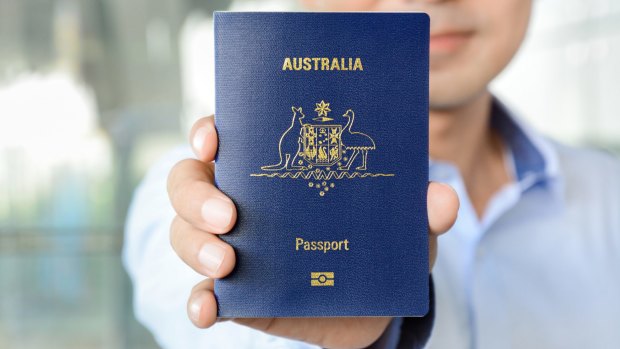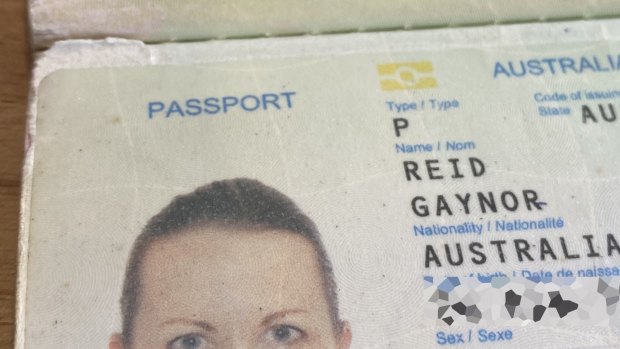This was published 4 years ago
Travelling with a damaged passport: How a minor tear could ruin your holiday
By Josh Dye

Keep your passport in good condition if you want to avoid a nasty surprise at the airport.Credit: iStock
We've all heard horror stories of someone who's had their travel plans ruined at the airport because they didn't notice their passport was about to expire.
Ensuring your precious travel document has more than six months' validity left before you travel is an essential holiday tip.
But what about if your passport is judged to be damaged?

Gaynor Reid travels internationally about 30 times a year.
It's a surprise problem that caught out Gaynor Reid, an Australian based in Singapore. Ms Reid travels a lot for work - up to 30 times each year - as the Asia-Pacific vice president of communications for the Accor hotel group.
So she was shocked when late last year, as she prepared to fly back to Singapore from Perth, Ms Reid was stopped by Border Force officials who spotted a small tear in her passport.
"They said 'this is not a valid document because it's been ripped'," she said.

The small tear at the top left of Gaynor Reid's passport photo page was the problem.
After the gravity of the situation sunk in, Ms Reid panicked when she realised she would be denied boarding.
"I hadn't seen my family in days. I was almost getting hysterical at this point," she said.
"I pleaded with her, I actually cried. She wasn't having any of it."
Her ordeal ended when a kind Singapore Airlines representative came to the rescue and waved her through.
It was a generous move: airlines can be fined for carrying passengers with an invalid travel document, which includes passports judged to be damaged.
Not only that, they are required to return the passenger home at the airline's expense.
"You'd barely even know the rip was there - it's right up where the page attaches," Ms Reid said.
"I felt like a criminal standing there going 'I haven't done anything wrong here!' I travel probably 30 times a year - it's seen a bit of use but certainly not deliberate tampering with the document."
Data from the Department of Foreign Affairs and Trade (DFAT) shows the number of Australians applying to the Australian Passport Office to replace damaged passports has been trending down over the past five years.
In 2015, DFAT replaced 6445 damaged passports. In 2018, that figure dropped to 3391 and by late 2019 it was 2582.
Australians aged 18-29 account for more than a third of the damaged passports DFAT replaces. Child passports are the best looked after, making up just 7 per cent of all damaged passports.
The issue of damaged passports rose to prominence in late November after professional soccer player Sam Kerr was denied boarding on a Jetstar flight to Bali.
"What a joke," she tweeted, along with images of her passport and the damage in question. She later flew to Bali with another airline.
A spokesman for Border Force, which administers Australia's immigration regime, said airlines predominantly enforce the damaged passport checks, with fewer than five people denied entry into Australia in 2018-19 due to having a damaged passport.
"An airline may refuse to transport a passenger if the passport is damaged and would not meet the destination country's requirement," the spokesman said.
The agency encourages people to "check their passports prior to travelling and to contact the Australian Passport Office (APO) if they realise their passport is damaged".
Ms Reid will be forever grateful to the Singapore Airlines staffer who bent the rules for her, but she's certainly learnt her lesson for next time.
"I got lucky," she admits.
While the APO's website states that "normal wear and tear should not be a problem", it warns that travellers should check the following:
- There are no tears or cuts in the pages, especially the photo page.
- Everything on the photo page is legible and clear.
- There are no marks across your photo or in the Machine Readable Zone (MRZ) on the photo page.
- No pages have been removed.
- There is no alteration or tampering.
Top passport care tips include:
- Keep your passport away from liquids, including containers in your luggage or handbag that might spill
- Don't use your passport as a coaster
- Make sure your passport is not in a pocket when you wash your clothes
- Don't put foreign objects such as sticky tape on your passport pages
Number of Australian passports replaced due to damage
2015: 6445
2016: 4853
2017: 4257
2018: 3391
2019 (to November): 2582
See also: The world's most powerful passports for 2020 named
Sign up for the Traveller newsletter
The latest travel news, tips and inspiration delivered to your inbox. Sign up now.